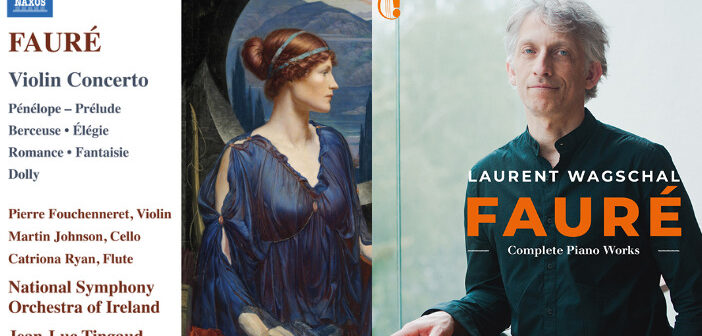This page is also available in / Cette page est également disponible en:
![]() Francais (French)
Francais (French)
-
Naxos3
-
Calliope3
Fauré is the French composer the world finds hardest to dislike. While Debussy means custard to some tastes and Ravel an acute form of mustard, their senior colleague wore a bushy white moustache and wrote Claire de Lune. What’s not to like?
Fauré’s reputation has barely changed since his death, 100 years ago this week. Fauré is admired as a supplier of salon songs to the Proustian set, as composer of the most-imitated Requiem, as organist of the elite Madeleine church in Paris and as reforming director of the crusty old Conservatoire. Take away the French accent and he could be mistaken in dim light for Edward Elgar.
A pair of new releases show some of Fauré’s workings. An unpublished movement survives of a violin concerto he wrote in his 30s. It starts agreeably with an orchestral prelude and goes imprecisely nowhere for the next quarter-hour. Fauré would later write a fabulous violin sonata; nothing here anticipates its mastery. Soloist Pierre Fouchenneret puts in great efforts of persuasion and Ireland’s National Symphony Orchestra provides competent accompaniment with conductor Jean-Luc Tingaud.
The best pieces on this pick’n’mix Naxos album are the prelude to Fauré’s failed opera Pénélope and an orchestration of his Dolly Suite for docile children. It’s all nice enough.
An excess of Fauré makes me reach for the asperities of Ravel, if not Boulez. Laurent Wagschall’s 4CD box of Fauré’s solo piano music needs to be taken in homeopathic doses. In between what sounds like a lot of teaching exercises, the ones marked ‘nocturne’ and ‘barcarolle’ come over as gregarious and seductive. Fauré, an errant husband, seldom spent an evening at home and kept a mistress in a flat nearby. The piano music, like his lifestyle, belongs to another era. Not quite so likeable, after all.
This page is also available in / Cette page est également disponible en:
![]() Francais (French)
Francais (French)












